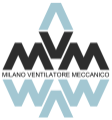Check out the ventilator design on arXiv.
Presented here is the design of the Mechanical Ventilator Milano (MVM), a novel mechanical ventilator designed for mass scale production in response to the COVID-19 pandemics, to compensate for the dramatic shortage of such ventilators in many countries.
The MVM ventilator is inspired by the Manley ventilator, which was developed by Roger Manley in 1961, based on “the possibility of using the pressure of the gases from the anaesthetic machine as the motive power for a simple apparatus to ventilate the lungs of the patients in the operating theatre”. The MVM is designed to similarly meet the requirements of a ventilator as simply as possible. The MVM will integrate advanced features designed by anesthesiologists participating in the project who work in the medical wards in Lombardy, the region most severely hit by the COVID-19 epidemics. The late Roger Manley’s son, John Manley, wrote to the MVM Collaboration saying, “It’s great to see his work still has the potential to help people today.”
The purpose of the research paper was to disseminate the conceptual design of the MVM broadly, to solicit feedback from the scientific and medical community, and to speed the process of review, improvement, and possible implementation.
The design was optimized to permit large scale production in a short time and at a limited cost, relying on off-the-shelf components, and readily available worldwide from hardware suppliers. Operation of the MVM requires only a source of compressed oxygen (or compressed medical air) and electrical power.
The MVM features electrically driven pneumatic valves rather than mechanical switches with a stripped-down mechanical design that uses readily available, off-the-shelf components. This enables quick progress from design to inexpensive mass production of safe, reliable ventilators for hospitals and patients around the world. The modular design can be adapted to swap out parts based on their availability in different regions of the world.
MVM is designed to work in a pressure-controlled mode, which appears to be the correct operation mode for the COVID-19 patients, for whom a high pressure may damage further the lungs. MVM and can be operated in both independent ventilation (pressure-controlled ventilation, PCV) and patient-assisted control modes (pressure-supported ventilation, PSV).
The system connects directly to a line of pressurized medical oxygen or medical air and relies on regulation of the flow to deliver medical air, medical oxygen, or a mixture of both to the patient at a pressure in the range suitable for treatment. Pressure regulation of the end-expiratory cycle is achieved by discharging the expiratory flow through a valve which sets the desired minimum positive end-expiratory pressure (PEEP). Another adjustable pressure limiting valve is connected to the inspiratory line and ensures that the maximum pressure delivered does not exceed the pre-set value.

Illustration of the MVM ventilator and possible breathing circuit.
At this stage the MVM is not a certified medical device. Construction of the first prototypes started with a team of engineers, scientists, and computing experts.
The international collaborators have initiated the project using their own funding resources. As the design advances from initial prototypes to final production design, regulatory approval, manufacture and distribution, and additional funding will be required in each country.
The MVM is currently in final prototyping to ensure compliance against clinical requirements and has been tested on a ASL-5000 breathing simulator, which simulates a breathing patient, at Ospedale San Gerardo in Monza, Italy. Medical certification and regulatory approval are currently being developed in Europe (ISS), the US (FDA) and Canada (Health Canada). The device is designed to be fully compliant with the guidelines “Rapidly Manufactured Ventilator System” issued by the UK Medicines & Healthcare products Regulatory Agency (MHRA), see https://tinyurl.com/v8xn9j4
